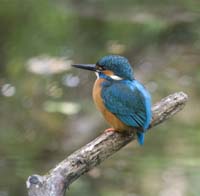The Lake Ørnsø path
On a 3 km long hiking tour around Ørnsø, nature can be experienced close by, and by taking a few smaller detours, you can get a good insight into the cultural history. Despite the proximity of the city, here is peace and quiet. Along the way you will find more information about the lake and its bird life, buildings and sites.
Availability
The Ørnsø path is primarily for walking, as the trail lies in a natural area that is relatively vulnerable to human disturbances.
A protected area
The area around Ørnsø offers a lot of varied nature, from open meadows and dense willow thicket to high-trunk woods of red alder and beech. The lake contains a rich birdlife, which can be observed from the path in certain places. The area's other wildlife is linked to the lake, the rivers, the forests and the meadows. Among other things, the otter lives on the lake and the rivers. The natural values of the area are protected so that they are preserved for posterity.
The lake and the aquatic environment
Ørnsø is a nutritious lake of 42 ha and a max. depth of 10.5 m. For many years the lake has been heavily ocher from the river Funder Å. In recent years, much has been done to reduce leaching of the ocher to the lake, but the aquatic environment still seems to be affected. The aquatic environment is also influenced by nutrients from the farms along Funder Å. However, the impact is decreasing.
The cultural history
The surroundings of the lake are also rich in cultural history. Silkeborg Bad and German bunkers from World War II are some of the significant buildings. In addition to the railway line between Silkeborg and Herning, there has been a railway to Kjellerup / Rødkærsbro, Ejstrupholm and Horsens. The three abandoned tracks are today used as nature trails for pedestrians, cyclists and riders.
Read more about hiking suggestions in the area here



